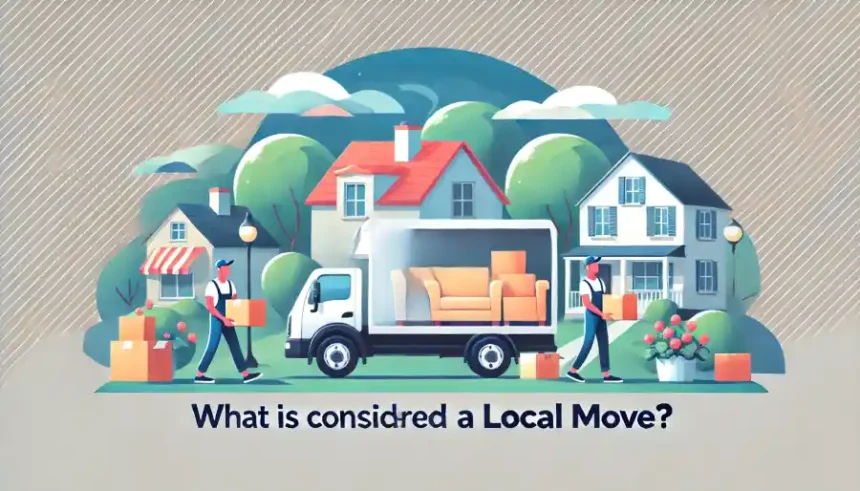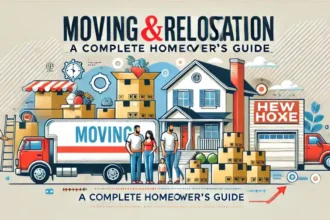Relocating can be a stressful experience, but understanding whether your move qualifies as a local move can make the process much easier. So, what is considered a local move?
A local move typically refers to a short-distance relocation, usually within 50 miles or less, although some moving companies extend this range to 100 miles. These moves are simpler and faster than long-distance relocations and are generally completed within a single day.
Statistics reveal that 85% of all relocations in the U.S. are considered local, highlighting their significance in the moving industry. Whether you’re shifting across town or to a nearby suburb, knowing if your move is local helps you plan better, avoid hidden fees, and select the right service provider.
If you’re preparing for a move, understanding this classification is crucial—it impacts your budget, time, and overall experience. Let’s break it down further to give you the clarity you need.
Understanding a Local Move
A local move involves moving your belongings a short distance, typically within the same city or metro area. Here’s how it’s defined:
1. Distance Criteria
Most moving companies classify a local move as one within 50 miles or less.
Some extend this limit to 100 miles, depending on their policies and regional regulations.
2. Time Taken
Because of the short distance, local moves are usually completed in 4-8 hours.
Larger homes or additional services like packing may extend this timeframe.
3. Cost Structure
Local moves are charged hourly, based on the number of movers, truck size, and total labor hours. Additional fees may apply for stairs, long carries, or packing services.
Why This Distinction Matters
Understanding what qualifies as a local move affects three key aspects of your relocation:
- Budget Planning: Local moves are more affordable than long-distance moves, typically costing between $240 and $3,200 depending on the home size and labor hours.
- Service Selection: Moving companies that specialize in local relocations often offer personalized services like packing, furniture assembly, and eco-friendly moving options.
- Compliance: Local moves are regulated by state laws, so it’s essential to hire a licensed and insured moving company.
Key Components of a Local Move
1. Real-Life Examples
Understanding local moves becomes easier with real-world scenarios:
Urban Example: Moving from a high-rise apartment in downtown Chicago to a suburban home 20 miles away.
Challenges: Parking restrictions, elevator scheduling, and managing traffic.
Rural Example: Relocating from one farmhouse to another 15 miles apart in the same county.
Challenges: Limited service providers and longer transportation times despite the short distance.
2. Environmental Considerations
Sustainability is increasingly important in the moving industry. Consider these eco-friendly options:
- Biodegradable Packing Materials: Use compostable bubble wrap or recycled cardboard boxes.
- Green Moving Companies: Some movers now use electric trucks or fuel-efficient vehicles to reduce their carbon footprint.
3. Hidden Costs to Watch For
While local moves are generally cost-effective, be aware of these potential charges:
- Stairs or Elevators: If movers need to carry items up or down multiple floors, additional fees may apply.
- Long Carry Fees: If the moving truck cannot park close to your home, movers may charge extra for carrying items over long distances.
- Packing Services: Opting for professional packing or unpacking can add to the total cost.
For detailed guidance on preparing your belongings, explore our guide on How to Pack for a Local Move?. It provides step-by-step instructions for ensuring your items are packed securely and efficiently.
Industry Trends and Insights
The Growing Demand for Local Moves
With urbanization and changing lifestyles, local moves are more common than ever:
- Statistics: A 2022 survey reported that 85% of all moves in the U.S. are local, reflecting their prevalence in urban and suburban areas.
- Trend: Younger generations often move locally due to job changes, education, or lifestyle upgrades, driving demand for short-distance relocations.
Regional Nuances
Local moves can vary greatly depending on where you live:
- Urban Areas: These moves require careful planning to navigate traffic, secure parking permits, and comply with building regulations.
- Rural Areas: Although less congested, rural moves may involve greater mileage due to the distance between properties.
FAQs: Related Questions About Local Moves
1. How Long Does a Local Move Take?
A local move usually takes 4-8 hours, depending on the size of your home and the distance.
2. How Are Local Moves Charged?
Most local moves are charged hourly, with additional fees for stairs, packing, or special handling.
3. What Should I Look for in a Moving Company?
Ensure the company is licensed, insured, and experienced in local relocations. Look for customer reviews and specialized services like eco-friendly moving.
Emotional Aspects of Local Moves
Even a short-distance move can be emotionally taxing:
- Children and Pets: Prepare them early by involving them in the process to ease anxiety.
- Decluttering: Use this opportunity to donate or recycle items you no longer need, giving yourself a fresh start in your new space.
Conclusion
A local move involves a short-distance relocation, usually within 50 miles, and is charged hourly based on the labor required. By understanding the specific criteria for local moves, you can plan effectively, manage costs, and avoid unexpected challenges.
Key Takeaways:
- Local moves are more affordable and faster than long-distance relocations.
- Watch for hidden fees like stairs, packing, or long carries.
- Regional differences can impact logistics, so choose a moving company experienced in your area.
Are you planning a local move soon? Share your experiences in the comments below or explore our other guides for more relocation tips. Don’t forget to check out our eco-friendly moving checklist to make your move sustainable!















